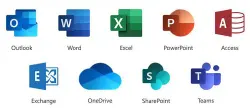- Home
- Products
Our Products:
DOMAINS
SECURITY
MICROSOFT 365
DO IT YOURSELF (DIY)
- Services
Our Services:
TECHNOLOGY
GAPHIC DESIGN
MARKETING
PRINTING
- Contact Us
We're Here: 24/7 Customer Service
SUPPORT
RESOURCES
ADDRESS
INTELLIPLANS, INC.
1563 Capital Cir Se A
Suite 369
Tallahassee, FL 32301
- Home
- Products
Our Products:
DOMAINS
SECURITY
MICROSOFT 365
DO IT YOURSELF (DIY)
- Services
Our Services:
TECHNOLOGY
GAPHIC DESIGN
MARKETING
PRINTING
- Contact Us
We're Here: 24/7 Customer Service
SUPPORT
RESOURCES
ADDRESS
INTELLIPLANS, INC.
1563 Capital Cir Se A
Suite 369
Tallahassee, FL 32301








